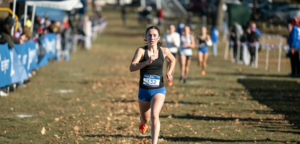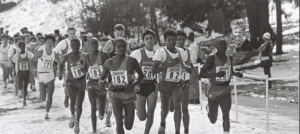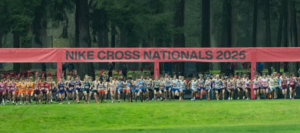In the coming weeks, many athletes will be stepping to the line for their first state championship experience. As coaches we worry about their performances, hoping that things will go right and they will have a great experience, hopefully run a fast time, jump high or far, and throw well. They’ve put in a lot of training and you’ve focused on getting them in the best shape in time for the big day.

So make sure to take the next steps to ensure they are truly ready for what is to come next. While being fit is important, being truly prepared takes some other attention as well. And by this, I mean to make sure you walk them through the logistics and time frame of a state championship meet.
First off, make sure they are prepared to manage themselves. Often coaches in an effort to make sure nothing goes wrong for their athletes hold the reigns of the program a little too tight. What I mean is that they take control of their athletes’ schedule, dictating things like warm up, when to change shoes, do strides, etc. without the athlete developing a routine and time schedule themselves. In many cases coaches are not let onto the infield so having your athletes able to do things on their own is a benefit to them headed to the starting line. It’s safe to say the atmosphere at a state meet is cranked up a notch or two, so having your athletes able to manage themselves pre-event is much better than sheltering them throughout the season.

And on that note, recognize, and be sure to help them recognize, while a state championship meet takes a while, the time span between events is much quicker as there are generally less heats than a regular meet. This can throw kids off as they probably have gotten used to a slower cadence to meets that simply won’t be the case at states. Certainly keep that in mind when signing them up for events at the seeding meeting as well.
I would also suggest not giving them a time to which you think their event might happen. Having clerked many meets, we’ve had people show up very late to get clerked in, saying their coach had told them their race would happen later. Teach them to pay attention to the events as they are taking place on the track so they can manage their time. Safe to say being rushed to the line, putting on your hip numbers on as the starter is giving commands is not the best way for an athlete to have their best race.
A couple other things which are the responsibility of the coach is to transmit the instructions you are given at the coaches meeting onto your competing athletes. Having been under the clerk’s tent and being at the coaches meeting, I have encountered athletes that are hearing my instructions for the first time even though the coaches were given the instructions already. Oftentimes the athlete gets flustered, sometimes needing to run off to the coach or the team tent to grab the baton, bring their spikes for inspection, grab their uniform or get the correct order for the relays. Having and knowing those things when they get to the clerks tent goes a long way towards them stepping to the line confidently, negating bad vibes that might come up when they get flustered.

Also instruct them which side their hip numbers go on. While we tell almost everyone, one of the biggest problems for timers is athletes not putting their hip numbers properly. At the coaches meeting the coaches are told which side the camera is on and which side the hip numbers go on, and while the clerks tell everyone they can, late arriving athletes might not get that instruction. Teaching them to check out the finish line, which side the camera is on and they can take care of it themselves. They can do this as part of the pre warmup routine.
All the stuff I’ve mentioned above is simple stuff, but by having your athletes seasoned and ready for these in the event some kind of hiccup comes along and messes with the best laid plans. I recall a MOCs where the top seed in the 110 hurdles checked in late as he was finishing up high jump (and winning) without his shoes. Many athletes would have been thrown off, but he calmly settled into blocks in his trainers, just like he had many times in practice I’m sure, confident he would make the finals where he would have time for his spikes.

There is a reason the top athletes at New Englands are also the best versed in championship logistics as well. Not only do they have the most experience, but I’ve seen they know what to do and how to do it intrinsically on their own. Under the tent they are the least phased by schedule changes, rain delays and anything that may upset the apple cart. They are prepared beyond simply being in monster shape, trained to run fast. They are in control and that is very powerful. Take the opportunity in these last weeks and help your young athletes be prepared too.











